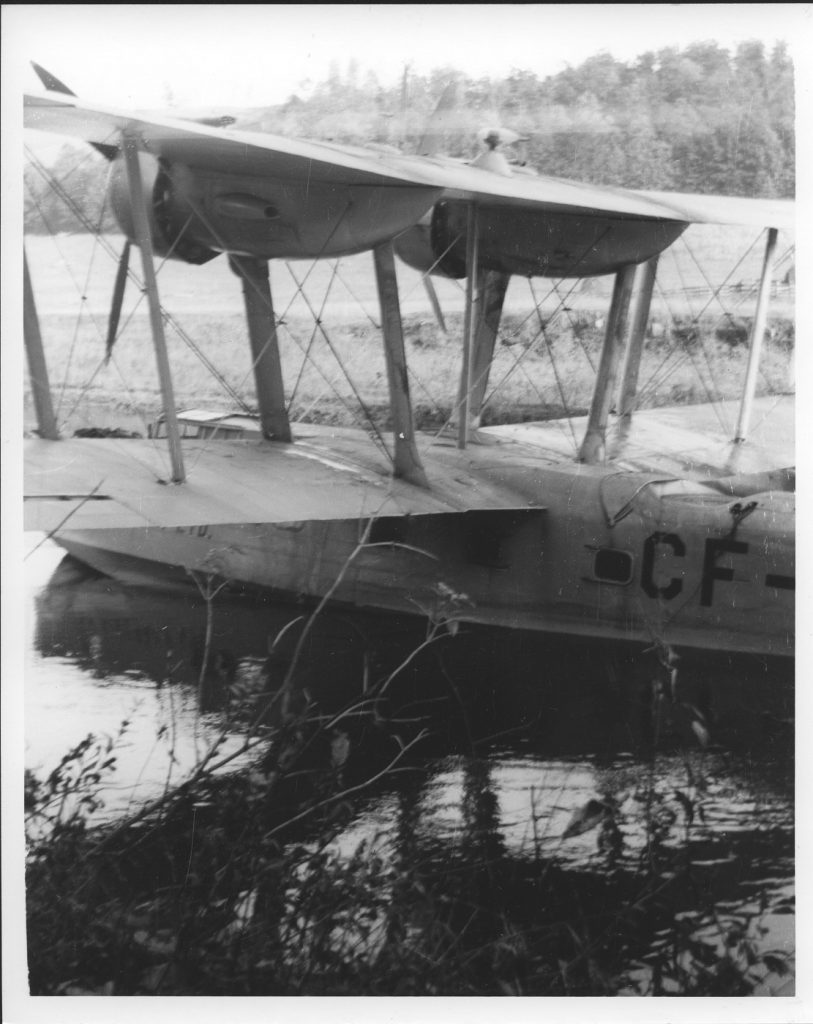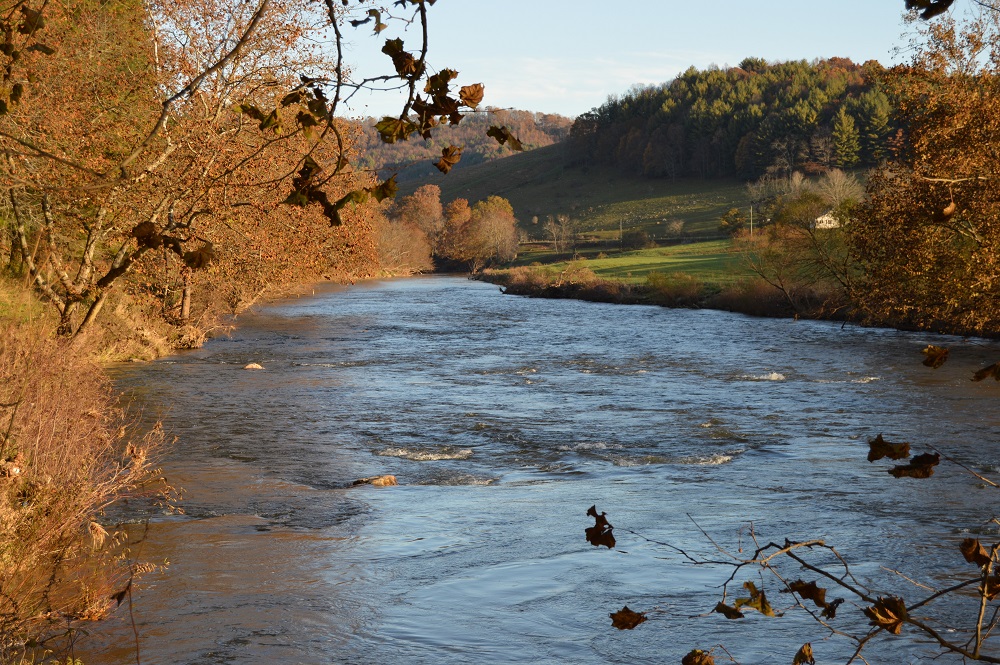Note: This article appeared in a previous edition of the Historical Society’s quarterly newsletter. If you would like to receive 4 newsletters, full of Ashe County history, become a member of the society today!
In November of 1945, Lon Reeves received an unexpected visitor at his farm in Nathan’s Creek, a visitor that had journeyed all the way from Canada, before dropping without warning. However, this visitor was not one that could easily be turned away: it was an 11,000 pound seaplane.
This seaplane was not the compact, single-engined, pond jumping variety that one might imagine landing on a relatively narrow waterway in Ashe County. It was, in fact, former military aircraft: a Supermarine Stranraer. This plane was originally used as coastal reconnaissance plane for Britain’s Royal Air Force, but was soon adopted primarily by the Canadian Royal Air Force, which used 40 Supermarine Stranraers to patrol Canada’s coasts for submarine threats in the early years of World War Two. The large aircraft, which featured a 85 foot wingspan, 54 foot overall length, and two 900 horsepower engines, originally required a 6 man crew to operate.
The planes were initially built in 1934, with production continued until 1940. Overall, a total of 57 Supermarine Stranraers were manufactured, the majority of which were operated in Canada. By the mid 1940s, these planes, some of the last of the bi-plane varieties still in use, were becoming antiquated, and, as World War Two came to a close, those operated by the Canadian Government were sold to private civilian companies. This particular plane, with registration CF-BYK, had been purchased in October 1945 by W.C. Stiple, who operated Stiple Air Transport, a Montreal based freight hauling company.

Only a month into its operation, this plane was hauling freight from Canada when, for unknown reasons, it began to run low on fuel. The crew of the large plane were in a dire situation. Designed as a seaplane, the Stranraer had pontoon floats rather than wheels, and could only land on a large water body. Sputtering out of gas over the southern Appalachian Mountains, the prospects of finding a water body sufficiently wide enough to accommodate an 85 foot wingspan seemed unlikely.
The crew decided their only option was to land the plane in a large stand of trees. They hoped that if they could bring the belly of the plane down on the trees’ canopy, the forest would absorb enough of the shock to save their lives. Suddenly, as they were looking for a flat stand of timber, they spotted potential salvation: a relatively wide, straight stretch of the New River just north of the J.E. Gentry bridge.
Lon Reeves son, Tom, was milking cows at about 5 o’clock in the evening when he heard the roar of the incoming plane. Because the trees along the river at the Reeves farm were small and pliable, the pilot was able to safely navigate the massive wingspan between the banks of the river without damaging the plane. The sight of a 6 ton biplane careening onto the surface of the New River in Nathan’s Creek was certainly a sight no one in the Reeves family could have expected.
After the nearly miraculous landing, the next pressing problem became the possibility of a take off. The river offered a runway of only a few hundred yards, and the plane was much too heavy to take off at that short distance. Consequently, several thousand pounds of freight would have to be unloaded. This grueling task took time, and the crew was forced to spend at least one night with Paul and Gladys Reeves, who lived nearby. The Reeves family remembered to crew as being polite and grateful for the temporary lodgings.
Finally, the plane was unloaded, the plane was refueled, and it was time to attempt the impossible: lifting 54 foot long seaplane off the surface of the New River. Schoolchildren from nearby Nathan’s Creek School were dismissed from classes, and walked over two miles to see the once in a lifetime sight.

In order to build up enough speed from the two 900 horsepower engines, the plane was tied to trees on either side of the river. The engines were given a full throttle, allowing them to build up the enormous power necessary to lift the plane. At the appointed moment, the ropes tethering the plane were cut, and the enormous seaplane began its fateful journey down the river.
All witness to this amazing sight recalled the amazing dexterity of the pilot, who was able to precisely navigate the huge wings between the trees on either bank of the river. Slowly the plane lifted off the surface of the water, ascended past the canopy of fall foliage, and roared off into the distance.
The brief visit of the oversized Canadian freighter made a lasting impression on all who saw it, and with good reason. Today, only one of the 52 Supermarine Stranraers built for the British and Canadian air forces survives, housed in the Royal Air Force Museum in London. But for two days in November of 1945, one made a home on the Reeves family farm in Nathan’s Creek, and, for a short moment, Ashe County was home to a piece of aeronautical history.